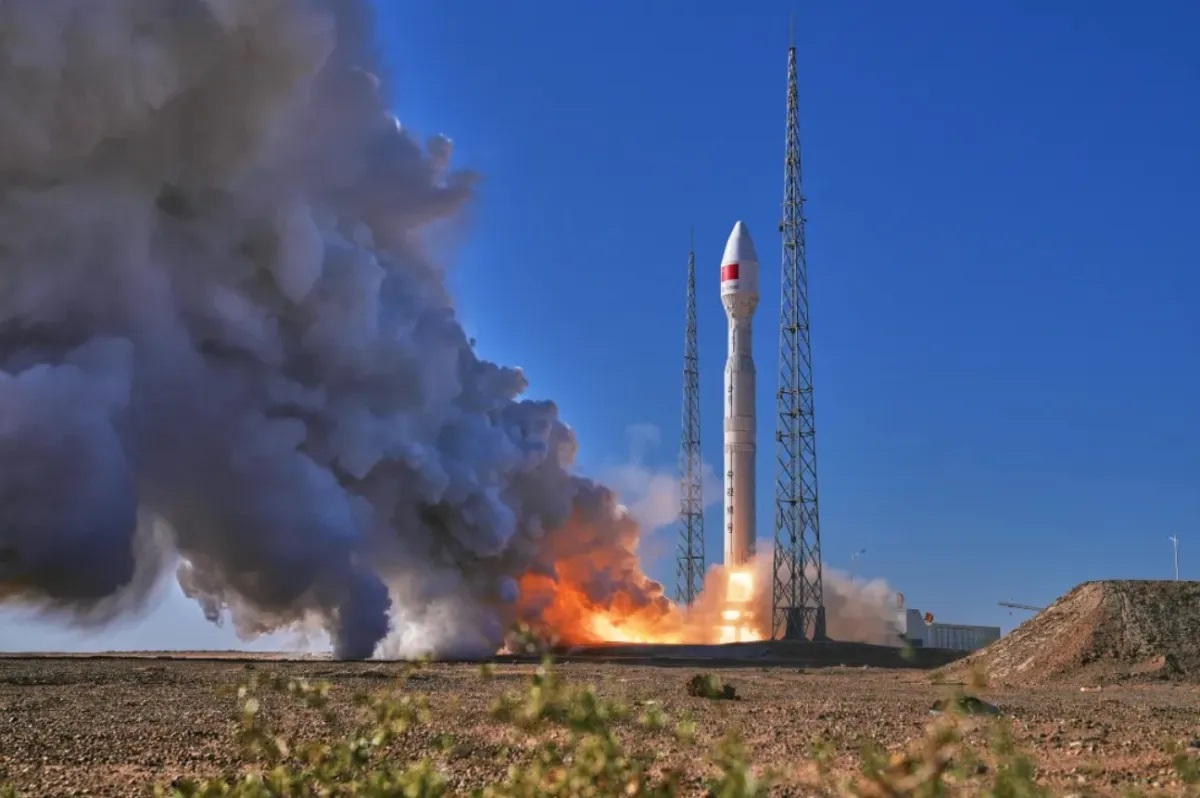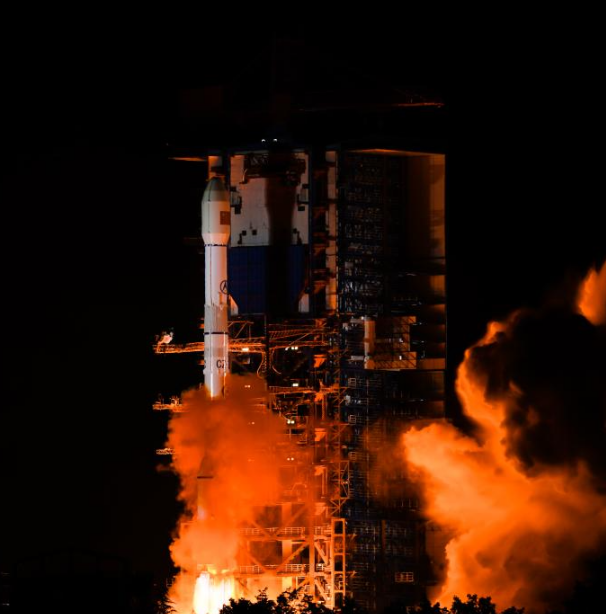12
2024-11
Chinese commercial Lijian-1 rocket launches 15 satellites

A Lijian-1 (Kinetica-1) solid rocket lifts off from Jiuquan spaceport, Nov. 11 (UTC), 2024, carrying 15 satellites into near-polar orbit. Credit: CAS Space
HELSINKI — A Chinese commercial rocket sent 15 satellites into orbit late Sunday, including launch service provider CAS Space’s first international payload.
The Lijian-1 (Kinetica-1) solid rocket lifted off at 11:03 p.m. Eastern Nov. 10 (0403 UTC, Nov. 11) from the Jiuquan Satellite Launch Center. The CAS Space launch report states the launch occurred within the “Dongfeng Commercial Space Innovation Test Area.” The area likely refers to a growing section of Jiuquan spaceport hosting launch areas for companies including CAS Space, Landspace, Space Pioneer and others. It is one of a number of initiatives to allow China to facilitate new commercial rockets and break a bottleneck in spaceport access.
The 15 satellites launched into near polar orbit are Shiyan-26 A, B and C, Jilin-1 Gaofen 05B, Jilin-1 Pintai 02A 03, Yunyao-1 satellites 31-36, Xiguang-1 satellites 04 and 05, the Omani IRSS-1/OL-1 remote sensing satellite and Tianyan-24.
No information is provided regarding the Shiyan satellites. The name refers to an experimental and often classified series of Chinese satellites. The pair of Jilin-1 satellites were launched for satellite manufacturer and operator Chang Guang Satellite Technology Co., Ltd., (CGST), which operates the Jilin-1 constellation of high resolution remote sensing satellites.
CGST now has at least 117 satellites in orbit. The Jilin-1 Gaofen 05B satellite serves as a technology demonstrator for the high-resolution Gaofen 05 constellation. CGST apparently aims to launch 200 such satellites by 2027 to provide daily global coverage. The company said in 2022 it aims to more than double its planned 138 satellite constellation to 300 satellites.
Jilin-1 Pintai 02A03 is a high-resolution optical remote sensing satellite that can provide users with remote sensing information services such as situation analysis and target monitoring, according to CAS Space.
The Yunyao-1 31-36 are owned by Tianjin Yunyao Aerospace Technology Co., Ltd. The satellites carry GNSS occultation or long-wave infrared camera payloads to provide meteorological data.
Xiguang-1 04 and 05 were developed by Xi’an Zhongke Xiguang Aerospace Technology Co., or Xiopm Space. These are China’s first commercial high-resolution methane source detection satellites. The former carries a methane camera, a chlorophyll camera and a multispectral camera, while the latter carries a hyperspectral camera and a panchromatic camera.
Tianyan-24 is an optical remote sensing satellite developed by Juntian Aerospace, while Oman IRSS-1/OL-1 is described as an intelligent remote sensing optical satellite developed in part by Chinese firms, through the China Great Wall Industry Corp., (CGWIC), an arm of China’s main space contractor CASC.
The international payload is notable in that it demonstrates CAS Space’s ability to negotiate with CGWIC and others to launch commercial payloads from abroad. CGWIC has typically negotiated the launch of international payloads on CASC’s Long March rockets. CAS Space is aiming to make international contracts part of its business operations, despite the challenges of export regimes and the dominance of SpaceX.
The Lijian-1 has a take-off weight of 135 tons, a total length of 30 meters, a core stage diameter of 2.65 meters, a fairing diameter of 2.65 meters and can carry 1,500 kilogram of payload into a 500-kilometer sun-synchronous orbit, according to the Chinese Academy of Sciences. It uses SP70 solid rocket motors from CASC.
The upcoming Kinetica-2 rocket, currently set for launch in September 2025, will enhance CAS Space’s payload capabilities to reach broader client needs, offering up to 7,800 kilograms to sun-synchronous orbit and 12,000 kg low Earth orbit. Potential recovery tests for reuse are planned at the end of 2026. It recently secured a role launching a low-cost cargo transportation system to the Tiangong space station, and is aiming to offer suborbital tourist flights by 2027.
The launch was China’s 54th orbital launch of 2024. Upcoming missions include the launch of the Tianzhou-8 cargo resupply mission to Tiangong, expected Nov. 15, and Zhuque-2 launches from Landspace.
-
29
2025-05

Tianwen-2 Mission Launched Successfully
At 1:31 AM today, China successfully launched the Tianwen-2 planetary exploration probe from the Xichang Satellite Launch Center using the Long March-3B Y110 carrier rocket.
-
13
2025-05

Communication Technology Experiment Satellite No. 19 Successfully Launched
At 2:09 on May 13, China successfully launched the Communication Technology Experiment Satellite No. 19 from the Xichang Satellite Launch Center using a Long March 3B carrier rocket. The satellite smoothly entered its predetermined orbit, and the launch mission was a complete success.
-
12
2025-05

Remote Sensing Satellite No. 40, Group 02, Successfully Launched
On May 11 at 21:27, China successfully launched the Remote Sensing Satellite No. 40, Group 02, from the Taiyuan Satellite Launch Center using a Long March 6A carrier rocket. The satellite entered its predetermined orbit smoothly, and the launch mission was a complete success.









